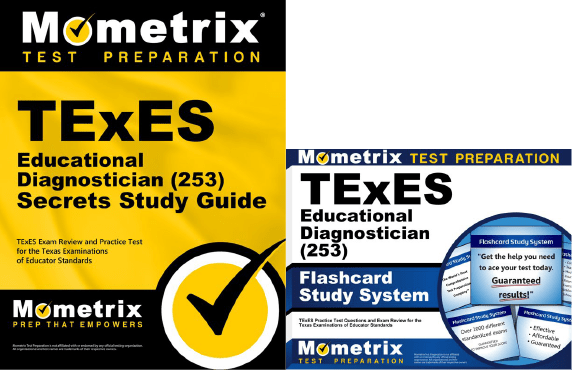If you need help studying for the TExES Educational Diagnostician exam or just want some more information about what the exam is like, you’ve come to the right place.
Click below to take a free TExES Educational Diagnostician practice test!
What’s on the Exam?
There are 91 questions on the exam, which are grouped into four competencies, and the time limit is 4 hours and 45 minutes.
The questions are split into two types:
90 questions
Selected-response questions require you to select the correct answer from a list of options. Multiple-choice questions are the most common example, but you may also see true-or-false questions and “matching” questions, which ask you to match terms or concepts with their definitions.
Constructed-Response (CR)
1 question
The constructed-response question requires you to write your answer instead of selecting from a list of choices. Your response to this question is generally expected to be 400-600 words, and you’ll be given specific details and instructions before you take the test.
Let’s take a closer look at the different sections of the exam.
1. Identification and Assessment
34% of the exam
- Identifying students who meet disability criteria
- Determining the need for specially designed instruction and related services
- The functions and principles of assessment
- Appropriate formal and informal assessments
- Interpreting, reporting, and communicating the results of an FIIE
2. Curriculum, Instruction, and Intervention
23% of the exam
- Educational implications of disabilities
- Appropriate assessment and instructional strategies for developing social, adaptive, communication, and behavioral skills
3. Professional Responsibilities
23% of the exam
- Effective consultation
- The development of collaborative relationships with students, parents, school personnel, and other professionals
- Professional roles and responsibilities
- Ethical and legal foundations of evaluation
4. Analysis and Response
20% of the exam
- Analyzing qualitative and quantitative data to identify a student’s strengths and needs
- Determining evidence- and research-based recommendations for meeting educational needs
- Providing thorough evaluations
Computer-Adaptive Testing (CAT)
The TExES Educational Diagnostician exam is a computer-adaptive test. Basically, this means that the questions will become harder or easier as you go through the exam, based on how well you’re answering the questions.
For example, say you answered the first question correctly. The first question is of medium difficulty, so the next question will be slightly harder. Then, let’s say you answered the second question incorrectly. The next question would then be a medium question.
How to Register
To get started with your registration, you’ll need to create an account on the NES website. You can then register for the exam and schedule a test date through your account.
When you submit your registration, you’ll need to pay the $200 testing fee.
Exam Scores
The test is scored using a scaled scoring method. Here’s how it works:
You will need a score of 240 to pass the test.
The reason your raw score is converted to a scaled score is because everyone who takes the test is given a slightly different set of questions. Since everyone has a different arrangement of questions, and because some questions are harder than others, converting your raw score to a scaled score ensures a more even playing field.
FAQs
How many questions are on the TExES Educational Diagnostician exam?
The exam contains 91 questions.
What is the time limit for the TExES Educational Diagnostician exam?
The exam is timed at 4 hours and 45 minutes.
What is the passing score for the TExES Educational Diagnostician exam?
You’ll need to get a final scaled score of at least 240 to pass.
How much does the TExES Educational Diagnostician exam cost?
The testing fee is $200.



 TExES Study Guide
TExES Study Guide TExES Flashcards
TExES Flashcards
